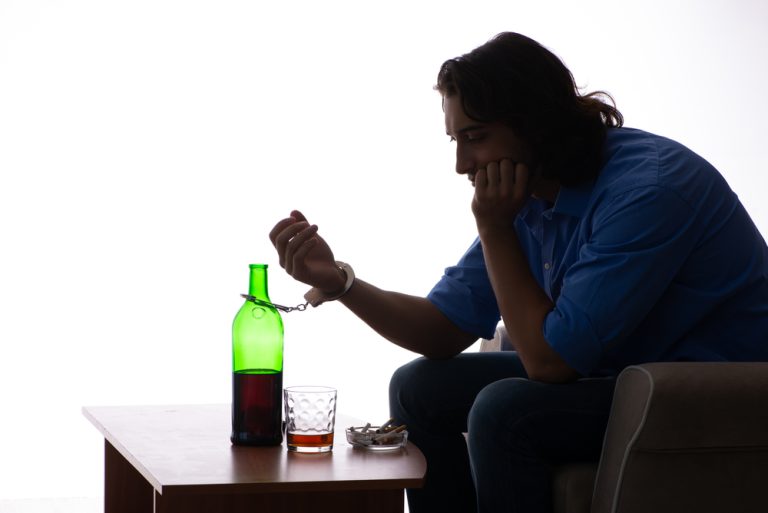If you drink large amounts of alcohol every day or almost every day, withdrawal symptoms can begin a few days after you stop drinking. “The shakes” describe mild alcohol withdrawal—tremor, anxiety, sweating—usually starting within 12 hours. DTs emerge later (48–96 h) with severe confusion, hallucinations, fever, and life-threatening autonomic instability. CIWA is a complex score which can be used to monitor and titrate therapy for alcohol withdrawal. CIWA scoring has several drawbacks, and generally isn’t very useful (especially within a critical care arena, which is staffed by experienced nurses).
Kadamb benefits and uses explained: dosage guidelines, side effects, and research
DT usually begins 48 to 96 hours after the What is Delirium Tremens last drink, but it can start later than this timeframe. Once I have started titrating my benzodiazepines, I take some time to consider the wider differential diagnosis. However, in delirium tremens, the patients will have altered mental status, abnormal vital signs, and often a fever. The differential is quite large, including infection, trauma, endocrine and electrolyte abnormalities. A CT of the head is likely on the table, as well as a number of labs.
Scope, Mortality Trends, and Hospital Statistics
- The Recovery Village Ridgefield offers comprehensive addiction treatment for drug and alcohol addictions and co-occurring mental health conditions.
- We’re here to help you reclaim joy, wellness, and a brighter future.
- The history of prolonged alcohol use makes a person more susceptible to DTs.
- Now you know how excessive alcohol consumption and sudden quitting may lead to Delirium Tremens.
- It ensures they receive all necessary care for a safe and successful recovery.
When magnesium is administered intravenously to patients without renal insufficiency, about 50% of the dose is excreted into the urine and not retained by the body. For a 70-kg person with normal renal function, 4-6 g of magnesium sulfate (32-48 mEq of magnesium) is administered by continuous IV infusion on the first day, followed by half that amount daily for 4 days. Alternatively, the same daily dose of magnesium can be administered intramuscularly at 6- to 8-hour intervals.
Delirium Tremens vs Alcohol Withdrawal
Quitting cold turkey puts you at higher risk for withdrawal symptoms, including DTs. That said, cutting back gradually takes a lot of discipline, and you may still experience some level of withdrawal. In addition to mental disturbances, DTs also present with significant physical symptoms. Patients may also experience restlessness, agitation, and excessive sweating. Rapid heartbeat and high blood pressure are other indicators of DTs, as the body’s autonomic nervous system goes into overdrive during alcohol withdrawal.
Recovery Can Be Life Changing
It is possible for a person who experiences alcohol withdrawal to have hallucinations, beginning a day after the last drink. In fact, about a quarter of people who suffer from alcohol withdrawal will hallucinate, which involves hearing, seeing, or feeling things that are not really there. These include lorazepam (Ativan), diazepam (Valium), and chlordiazepoxide (Librium), typically administered intravenously. Other times, it’s administered according to a fixed schedule, with additional doses given as needed. Despite appropriate treatment, the current mortality for patients with DTs ranges from 5-15%, but should be closer to 5% with modern ICU management. Mortality was as high as 35% prior amphetamine addiction treatment to the era of intensive care and advanced pharmacotherapy.
What role does family support play in the recovery from delirium tremens?
It typically occurs in individuals with a significant history of heavy alcohol use who suddenly reduce or stop their drinking. While other alcohol withdrawal symptoms can be uncomfortable, delirium tremens is uniquely characterized by severe confusion, agitation and autonomic instability (e.g., rapid heart rate, fever and high blood pressure). Delirium tremens, a severe form of alcohol withdrawal, requires careful treatment. The best way to prevent it is to avoid alcohol entirely, but moderation can help reduce the risk. This often means hospitalization and the use of sedative and anti-seizure medications. Patients with a history of severe withdrawal symptoms or concurrent illnesses need long-term planning.
Diazepam (Valium, Diastat)
- Delirium tremens (DTs), also known as alcohol withdrawal delirium (AWD), is the most severe form of ethanol withdrawal.
- The first step of treating alcohol use disorder is medically supervised detox, where alcohol is gradually reduced so as to minimize and manage alcohol withdrawal symptoms.
- Heavy drinkers can enter withdrawal even with BAC 100–200 mg/dL because their neuroadaptation expects much higher levels.
Always plan for professional supervision if you suspect a risk of severe withdrawal. Physiological MechanismLong-term heavy alcohol use chronically suppresses excitatory neurotransmitters (like glutamate) and amplifies inhibitory ones (like GABA). Once alcohol is abruptly stopped, the body experiences a rebound over-activity in excitatory pathways. The more severe the dependence, the more intense the rebound effect can be, culminating in DTs for certain individuals.

Delirium symptoms
This often means a trip to the emergency room or direct admission into a detox facility equipped to handle severe alcohol withdrawal. The good news is that, with modern treatment protocols, most people recover if they receive timely care. By recognizing delirium tremens as a life-threatening emergency, individuals, loved ones and healthcare providers can respond quickly, ensuring the best possible outcome. Such hospital-based care provides the best chance for a safe recovery. It ensures that medical professionals can respond to any severe withdrawal symptoms quickly. This kind of care is essential for anyone at risk of delirium tremens due to alcohol use disorder.

Individuals often face symptoms such as confusion, disorientation, and vivid hallucinations. These hallucinations can be tactile, visual, or auditory, leading to intense fear and paranoia. As a result, patients may experience significant anxiety and agitation. Mood swings and irritability are also common, making communication with caregivers a challenge. This psychological distress can hinder cooperation with medical treatment, necessitating mental health support.

